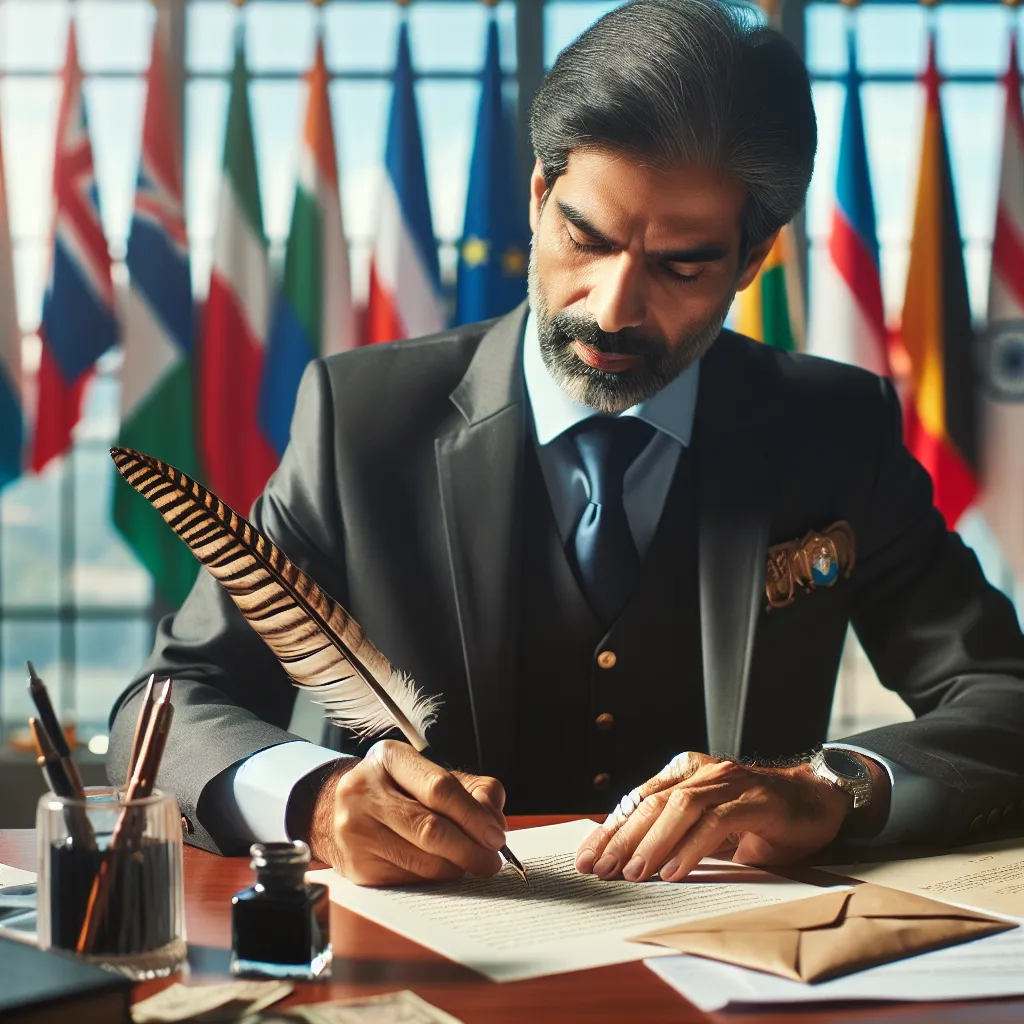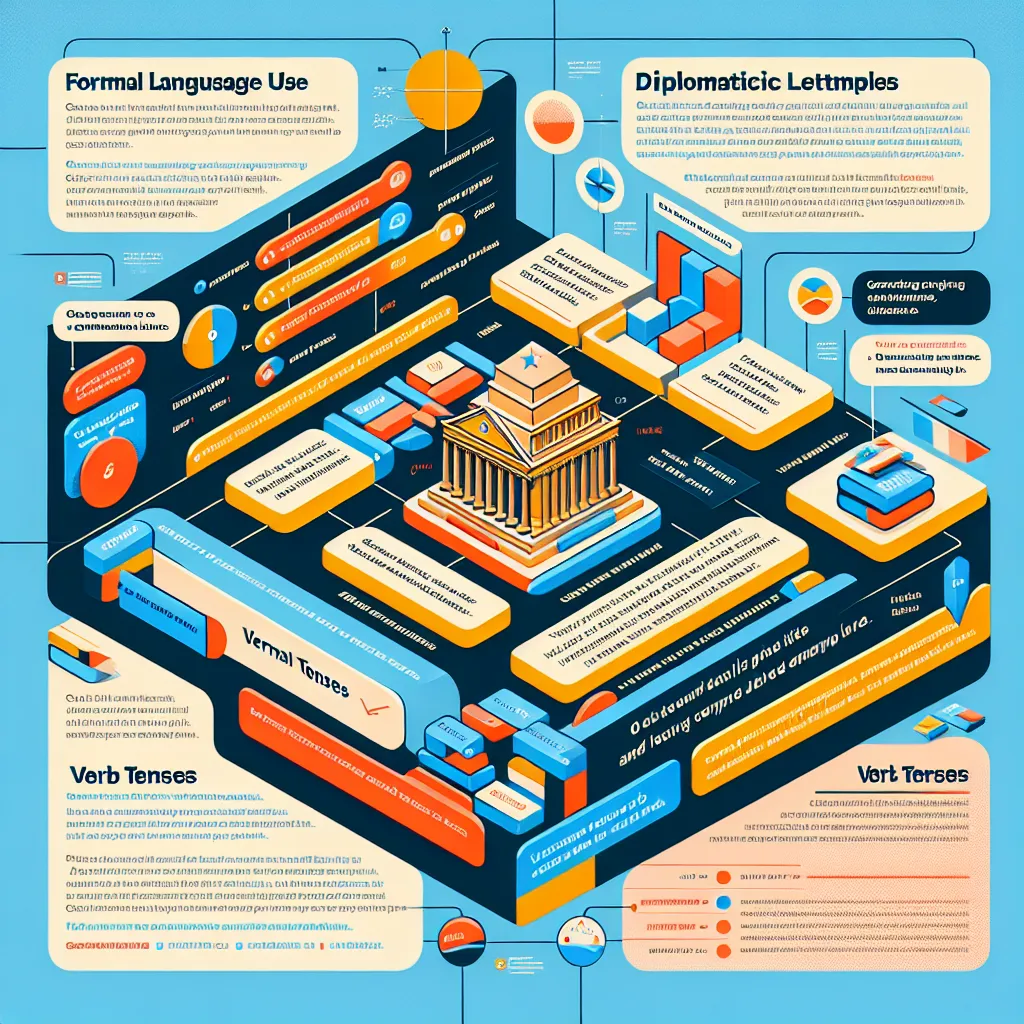Diplomatic correspondence requires a high level of precision and clarity in language use. Mastering grammar is crucial for effective communication in this field. This article provides expert tips and strategies on How To Improve Grammar In Diplomatic Correspondence, helping you enhance your professional writing skills.
Understanding the Importance of Grammar in Diplomatic Writing
Grammar plays a vital role in diplomatic correspondence as it ensures clarity, professionalism, and accuracy in communication. Proper grammar usage helps avoid misunderstandings and maintains the formal tone expected in diplomatic circles.
 Diplomatic Correspondence
Diplomatic Correspondence
Key Aspects of Grammar in Diplomatic Writing
- Precision in language use
- Formal tone and structure
- Clarity in expressing ideas
- Consistency in style and format
Essential Grammar Tips for Diplomatic Correspondence
1. Master the Use of Formal Language
Diplomatic writing requires a formal tone. Avoid colloquialisms, contractions, and informal expressions. For example:
- Instead of: “We can’t agree to those terms.”
- Use: “We are unable to accept those terms.”
2. Pay Attention to Verb Tenses
Accurate use of verb tenses is crucial in diplomatic writing. Be consistent and precise in your tense usage. For instance:
- “The treaty will be signed next month.” (future tense for planned events)
- “The negotiations have been ongoing for several months.” (present perfect for continuing actions)
3. Use Active Voice for Clarity
While passive voice has its place in diplomatic writing, active voice often provides more clarity and directness. Compare:
- Passive: “The proposal was rejected by the committee.”
- Active: “The committee rejected the proposal.”
4. Employ Subordinate Clauses for Complex Ideas
Diplomatic correspondence often involves complex ideas. Use subordinate clauses to express relationships between ideas clearly:
“While we appreciate your offer, we must decline at this time due to budgetary constraints.”
5. Utilize Transitional Phrases
Transitional phrases help maintain flow and coherence in your writing:
- “Furthermore, we would like to address…”
- “In light of recent developments…”
- “Notwithstanding the aforementioned concerns…”
Advanced Grammar Strategies for Diplomatic Writing
1. Mastering Subjunctive Mood
The subjunctive mood is often used in diplomatic writing to express hypothetical situations or wishes:
“If the treaty were to be ratified, it would significantly impact bilateral relations.”
2. Proper Use of Modal Verbs
Modal verbs like “may,” “might,” “could,” and “would” are crucial in diplomatic language for expressing possibility, permission, or polite requests:
“We would be grateful if you could provide further clarification on this matter.”
 Diplomatic Grammar Guide
Diplomatic Grammar Guide
3. Employing Parallel Structure
Parallel structure enhances clarity and elegance in writing:
“The agreement aims to promote cooperation, enhance security, and foster economic growth.”
4. Careful Use of Conditional Sentences
Conditional sentences are common in diplomatic writing to express hypothetical situations or potential outcomes:
“Should the negotiations prove successful, we would be prepared to move forward with the next phase.”
Common Grammar Pitfalls in Diplomatic Correspondence
1. Misplaced Modifiers
Ensure that modifiers are placed close to the words they modify to avoid ambiguity:
- Incorrect: “Having reviewed the proposal, the agreement was found satisfactory.”
- Correct: “Having reviewed the proposal, we found the agreement satisfactory.”
2. Pronoun Agreement
Maintain clear pronoun agreement, especially in complex sentences:
- Incorrect: “Each member state must submit their report by the deadline.”
- Correct: “Each member state must submit its report by the deadline.”
3. Overuse of Nominalizations
While nominalizations (turning verbs into nouns) are common in formal writing, overuse can lead to wordiness:
- Wordy: “The implementation of the policy will be conducted by the committee.”
- Improved: “The committee will implement the policy.”
Practical Exercises to Improve Grammar in Diplomatic Writing
- Rewrite informal sentences in a diplomatic style
- Practice using complex sentence structures with subordinate clauses
- Identify and correct grammar errors in sample diplomatic texts
- Compose short diplomatic notes focusing on specific grammar points
Resources for Further Improvement
- Style guides specific to diplomatic writing
- Grammar handbooks for advanced English usage
- Online courses on formal and diplomatic English
- Writing workshops focused on international relations and diplomacy
Conclusion
Improving grammar in diplomatic correspondence is an ongoing process that requires attention to detail, practice, and continuous learning. By mastering formal language use, paying attention to complex grammar structures, and avoiding common pitfalls, you can enhance the effectiveness and professionalism of your diplomatic writing. Remember, clear and accurate grammar is not just about following rules; it’s about ensuring that your message is conveyed precisely and diplomatically in the international arena.




